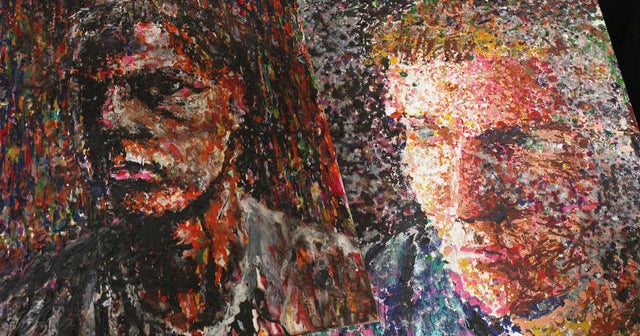In recent years, the LGBTQ+ community has made significant strides in achieving equality, but unfortunately, transgender individuals continue to face severe discrimination, often manifesting as violence and hate crimes. The alarming rate of transgender hate crimes across the globe presents a stark reminder that the fight for equality is far from over. Understanding transgender hate crime statistics is crucial in highlighting the extent of violence faced by transgender people and the need for comprehensive reform in both societal attitudes and legal protections.
In this article, we will explore the key statistics, causes, and impacts of transgender hate crimes, as well as the steps that need to be taken to curb this violence and protect the rights and dignity of transgender individuals. This analysis will not only reveal the grim reality but also provide an insight into the progress being made and the ongoing efforts required for change.
The Alarming Rise of Transgender Hate Crimes
In recent years, transgender individuals have become increasingly vulnerable to hate crimes, often subjected to physical violence, discrimination, and even murder. Transgender hate crime statistics reveal a disturbing trend that calls for immediate attention. The reasons behind this surge are complex, involving a combination of social stigmas, misinformation, and a lack of legal protections. While progress has been made in some parts of the world, many regions continue to witness an escalation in these types of crimes.
These crimes often disproportionately affect transgender women, particularly transgender women of color, who are more likely to experience violence. Data collected by law enforcement and advocacy organizations underscores the need for more stringent measures to combat hate crimes. Despite ongoing efforts, the trans community still faces significant barriers, such as underreporting of crimes and inadequate legal action.
The fear and danger that come with living as a transgender person in many countries cannot be overstated. This outline will explore the scope of transgender hate crimes, the challenges in gathering accurate data, and the social factors that contribute to this troubling issue.
Underlying Causes of Transgender Hate Crimes
Transgender hate crimes are a critical issue, driven by various factors that make transgender individuals vulnerable to violence and discrimination. Understanding these underlying causes is essential to addressing the problem effectively.
Understanding Transphobia: A Root Cause
Transgender hate crimes are often rooted in deep-seated transphobia within society. These transphobic attitudes fuel violence and discrimination against transgender individuals, manifesting in harmful ways ranging from verbal abuse to physical violence. Many people still hold misconceptions about gender identity, which contributes to societal fear and misunderstanding. Addressing these harmful attitudes is crucial in reducing violence and fostering an inclusive society.
Social and Economic Vulnerabilities
Transgender individuals frequently face higher levels of poverty, unemployment, and homelessness than the general population, making them more vulnerable to hate crimes. Discrimination in the workplace, housing, and social services often leads to economic instability, leaving transgender people without the resources or support to protect themselves. These vulnerabilities increase the risk of violence and exploitation, highlighting the urgent need for social safety nets that offer greater security for transgender individuals.
Inadequate Legal Protections
While many countries have enacted laws to protect against hate crimes, transgender people often fall through the cracks due to inadequate legal protections. Gaps in hate crime legislation, as well as biases within law enforcement, contribute to the underreporting and underprosecution of crimes targeting transgender individuals. Many transgender people are hesitant to seek justice due to fears of discrimination or being treated unfairly by the legal system, which exacerbates the cycle of violence and discrimination they face.
Transgender Hate Crime Statistics and Their Impact
Transgender hate crime statistics reveal the harsh reality that transgender individuals continue to face significant violence and discrimination. Understanding these statistics is essential for recognizing the extent of the problem and identifying patterns that need urgent attention. Here are key insights:
- Violence and Murder Rates: Transgender individuals are disproportionately affected by violence, with an alarming number being murdered each year due to their gender identity.
- Geographic Disparities: Rates of transgender hate crimes vary significantly by region, with certain countries and states witnessing more frequent incidents of violence against transgender individuals.
- Gender and Racial Disparities: Transgender women, especially those of color, are at a higher risk of experiencing violence. Studies show that transgender women of color are three times more likely to face violence than their white counterparts.
- Key Statistics: Approximately 50% of hate crimes against transgender people are motivated by gender identity, underlining the critical need for stronger protective measures and awareness.
These statistics highlight the urgent need for social, legal, and systemic change to protect transgender individuals from harm.
What Can Be Done to Combat Transgender Hate Crimes?
Combating transgender hate crimes requires a comprehensive, multi-pronged approach. The following actions are essential to protect transgender individuals and ensure they live in a safe, respectful environment:
- Policy Reforms: Governments must implement strong anti-discrimination laws that explicitly protect transgender individuals from hate crimes. These laws should cover all aspects of life, including employment, healthcare, housing, and public accommodations, to ensure equal rights and safety for transgender people.
- Education and Awareness Campaigns: Combatting transphobia starts with education. Public awareness campaigns aimed at dispelling misconceptions about transgender individuals are critical. Schools, workplaces, and community organizations should prioritize educational programs to foster understanding and acceptance of gender diversity.
- Community Support Systems: Establishing robust support systems for transgender individuals is essential. LGBTQ+ organizations, safe spaces, and accessible mental health services can offer crucial support to those affected by hate crimes, providing resources and assistance to help them navigate challenges and find a sense of security.
By focusing on these areas, we can reduce violence and discrimination and help create a safer, more inclusive society for transgender individuals.
The Role of Media and Public Figures in Addressing Transgender Hate Crimes
The media plays a significant role in shaping public attitudes toward transgender individuals. Unfortunately, negative portrayals often reinforce harmful stereotypes, which can contribute to violence and discrimination. However, the media also holds the power to influence change and foster understanding. By increasing positive representation of transgender individuals in films, TV shows, and news coverage, the media can help combat prejudice and promote acceptance. This positive representation is crucial in normalizing transgender identities and challenging societal misconceptions.
Public figures, such as celebrities, activists, and politicians, also play a pivotal role in addressing transgender hate crimes. By using their platforms to speak out against hate, these influential individuals can raise awareness, challenge harmful narratives, and advocate for stronger legal protections. Public advocacy from well-known figures helps shift public perceptions, encourages legislative reforms, and supports efforts to create a safer and more inclusive environment for transgender individuals.
Conclusion
The statistics related to transgender hate crimes are a stark reminder of the challenges faced by the transgender community. While some progress has been made, the numbers indicate that much more needs to be done to protect transgender individuals from violence. Combating hate crimes against transgender people requires a combination of legislative action, social awareness, and cultural change.
By addressing the root causes of transphobia, improving legal protections, and fostering a more inclusive society, we can reduce the number of transgender hate crimes and ensure that transgender individuals live in safety and dignity.
FAQ’s
Why are transgender individuals more likely to be victims of hate crimes?
Transgender individuals are often targeted due to societal ignorance, misconceptions, and prejudice. These harmful attitudes lead to discrimination and violence, particularly against transgender women and people of color.
What steps can be taken to reduce transgender hate crimes?
Legal reforms, public education, and better community support systems can help reduce transgender hate crimes. These measures, combined with more inclusive policies, will create safer environments for transgender individuals.
How can media help in reducing transgender hate crimes?
Media plays a crucial role by promoting positive portrayals of transgender individuals and challenging stereotypes. Public figures can also use their platforms to advocate for change and raise awareness about transgender issues.
Are there any countries with lower transgender hate crime statistics?
Some countries with stronger legal protections and inclusive policies, such as Canada and certain European nations, tend to have lower transgender hate crime statistics. However, challenges remain worldwide.
What can individuals do to support the transgender community?
Individuals can support the transgender community by advocating for legal rights, educating themselves on gender identity issues, and standing against transphobia in their communities.














